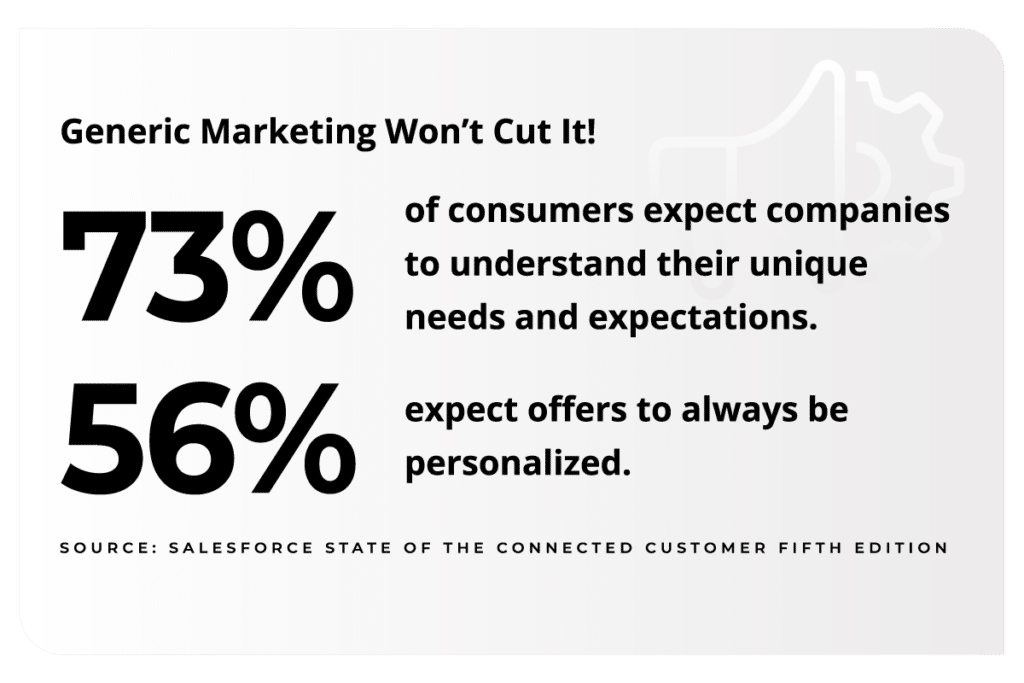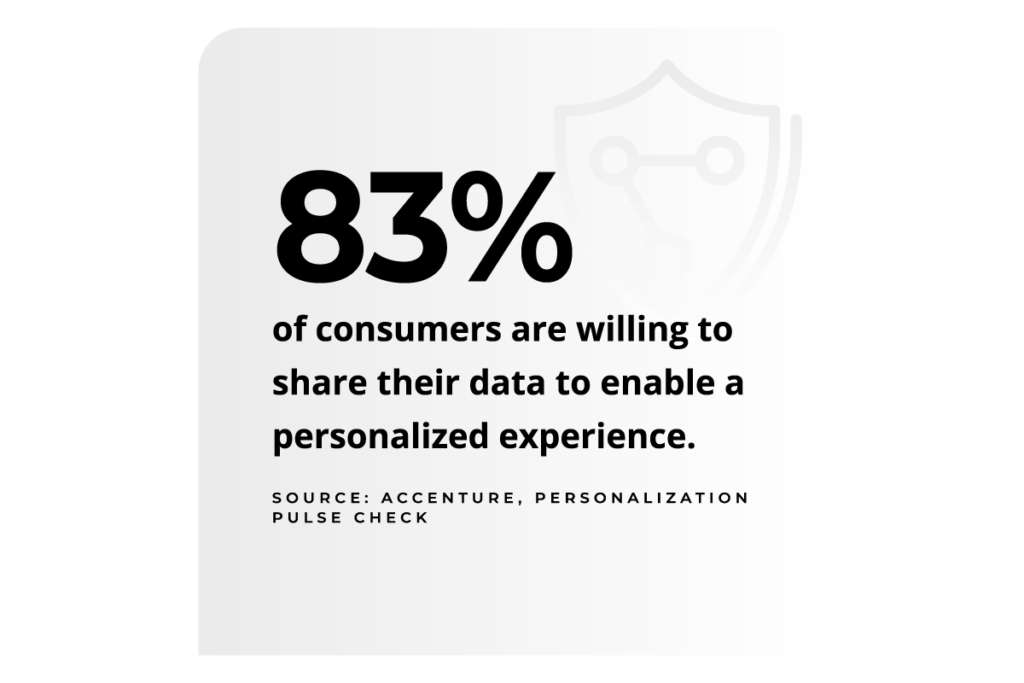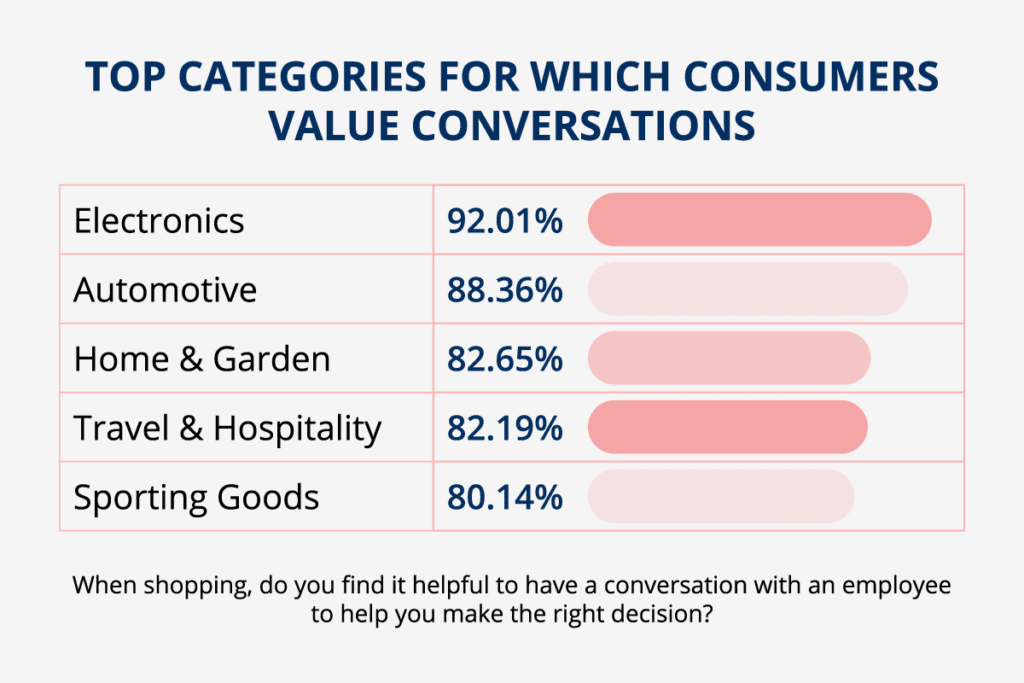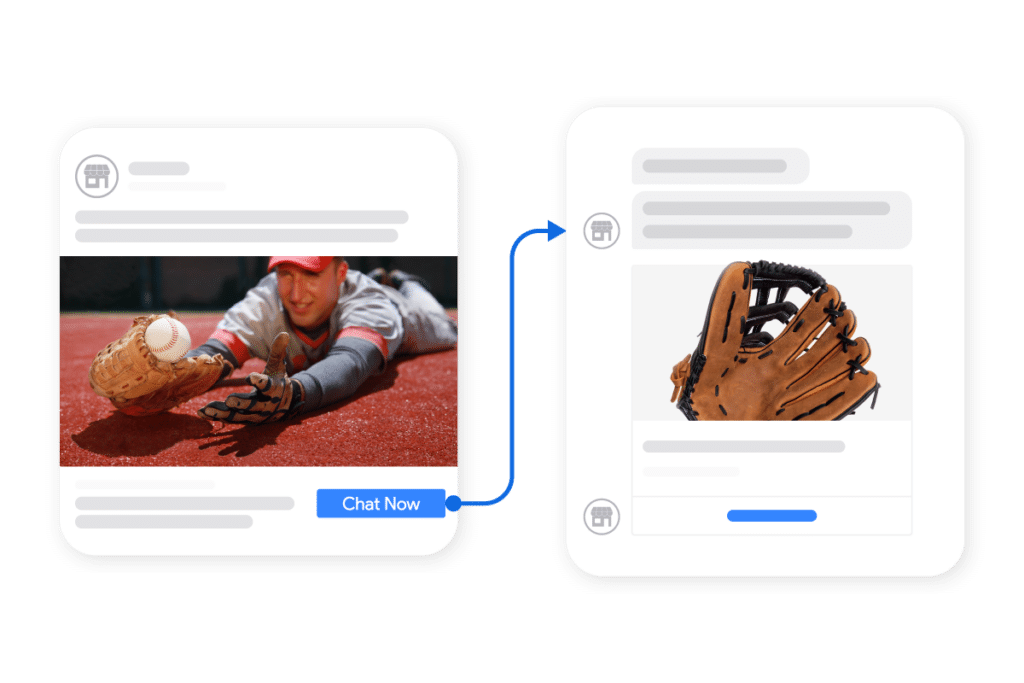How Marketing Teams Can Tap into Conversational Commerce to Attract, Convert, and Retain More Customers

Once, not so long ago, most brands sunk the majority of their marketing dollars into traditional initiatives like TV and radio commercials, print ads, direct mail, and outdoor advertising.
Then, eCommerce started gaining traction, and many brands started shifting their marketing spend online. Yet, most took a generic, one-size-fits-all approach, blanketing an entire audience with the same messaging – and hoping it stuck with at least a portion of that audience.
These days, consumers have higher expectations than ever before. Generic tactics – whether delivered via traditional or digital channels – are no longer enough to win and retain customers.
That’s why customer-centric brands are incorporating conversational commerce into their marketing strategies.
In this post, we’ll explore how consumers’ preferences are changing when it comes to marketing – and how brands can start leveraging conversational commerce to deliver marketing that resonates with shoppers throughout the purchase journey.
Consumers’ Behaviors, Preferences, and Expectations are in Flux
It’s no secret that eCommerce is growing. In 2022, eCommerce in the US reached a record high of $1.03 trillion – accounting for about 21% in total retail sales.
A significant portion of this growth is driven by mobile commerce – also known as m-commerce. This year, m-commerce in the US is expected to reach $511.8 billion.
So it’s not surprising that brands are investing more in digital marketing.
But consumers aren’t content with generic marketing campaigns. And they aren’t satisfied with one-sided, brand-driven communication. Per Salesforce’s State of the Connected Customer Fifth Edition, 73% of consumers expect companies to understand their unique needs and expectations. And 56% expect offers to be personalized every single time.

Conversational commerce provides marketers with a means to deliver the personalized experiences consumers crave. Brands that are able to meet shoppers’ expectations throughout the purchase journey are better equipped to attract, convert, and retain them. Case in point? Per an article for Yotpo, 80% of consumers are more likely to make a purchase from a brand that provides personalized experiences.
For marketers, conversational commerce isn’t just a passing fad. It’s the way for brands to build meaningful connections with consumers throughout the purchase journey.
It’s no wonder that by 2025, global spending on conversation commerce channels is predicted to reach $290 billion.
Data is Foundational to Superior Marketing Experiences
Consumers expect personalized marketing experiences throughout the purchase journey. Yet, all too often, brands fail to deliver.
Many worry that the inevitable death of the third party cookie will make it even more challenging to deliver marketing experiences that resonate with customers.
The right data is foundational to creating and delivering marketing experiences that engage shoppers. And conversational commerce channels are an ideal way to collect this data.
Collecting First Party Data
For starters, brands can use conversational commerce to collect first party data from shoppers. Though this might seem like an uphill battle, it often isn’t. According to a report from Accenture, 83% of consumers are willing to share their data to enable a personalized experience.

This data can be used to create tailored marketing experiences that resonate with each shopper. For example, suppose a shopper engages in a conversation with a brand about a camping tent. The brand can send the shopper future communications and offers that are focused on their interest in camping.
Capturing the Voice of the Customer
Of course, the best brands are those that offer products, services, and experiences that meet the needs and expectations of their customers. It gets tricky, though, because those needs and expectations are always changing.
Conversational commerce is a great way to capture the voice of the customer. Through conversational commerce, brands can better understand what customers like (and don’t like) about their offerings. Brands can then analyze this feedback and look for trends. Positive feedback can be incorporated into marketing messaging. Negative feedback, on the other hand, can be used to find opportunities to improve – and boost customer satisfaction.
A Single Source of Customer Truth is Essential
Data is essential to great marketing experiences. And most brands have a wealth of data at their disposal. But oftentimes, that data is siloed. It’s hard to make any sense of it – much less use it to inform marketing efforts.
The right customer data platform is key. And Salesforce is the ideal choice.
Salesforce unifies all customer data across all sources throughout the purchase journey. In other words, all data lives in a single location, providing brands with a complete, 360 degree view of each customer. Each new experience a customer has with a brand adds another layer of data into that view.
Marketers can then tap into that 360 degree view to deliver bespoke communications and experiences that engage (and convert) customers.
Leveraging Conversational Commerce Throughout the Purchase Journey
Data collection is a top marketing use case for conversational commerce. The data collected through these conversations can inform marketing efforts that resonate with each shopper.
However, there are other key ways winning marketing teams are leveraging conversational commerce throughout the purchase journey.
Amplifying Reach and Generating Leads
Modern consumers have nearly endless options across any given product or service category. Brands must rethink the strategies they use to attract those shoppers – and bring them into the sales funnel.
A benefit of in-store shopping is the opportunity to engage in a conversation with a sales associate. Though more consumers are shopping online, they still value conversations – especially for specific product and service categories.

Increasingly, brands recognize the power of conversations. And many are incorporating chat-based ads into their digital marketing mix. Essentially, these are ads that appear via social media, a search engine, or elsewhere on the internet. Rather than clicking on a link that brings the shopper to a landing page with more information, the call-to-action is to engage in a chat with the brand.

Some brands are also leveraging chatbots to deliver recommendations and offers while a shopper is browsing the website. Visitors can then engage with the chatbot to learn more. The more the brand learns about the shopper, the more tailored these messages can be.
If a consumer doesn’t make a purchase after engaging in a chat, the brand can use their information to develop customized marketing messages that’ll resonate – and ultimately get them to convert.
Blurring the Line Between Marketing and Customer Care Throughout the Purchase Journey
In the past, a consumer would visit a store or call a toll-free number to ask questions and get service. But increasingly, they seek assistance online – often via conversational commerce channels.
With the rise in conversational commerce, the line between marketing and customer service continues to blur.
Some enterprises have a dedicated digital engagement team that’s responsible for conversational commerce interactions. Others delegate responsibility to various departments – including marketing. For example, at some brands, marketing is responsible for customer service requests that come in through social media – which is often referred to as social customer service.
Brands are on the hook to deliver great service experiences via conversational commerce – whether the responsibility lies with customer service, marketing or some combination of the two.
Boosting Customer Loyalty and Lifetime Value
Marketers sink millions of dollars into attracting new customers. But retaining existing customers must also be a priority.
It’s not always easy. According to Salesforce research, nearly three-quarters (71%) of consumers have switched brands at least once in the past 12 months. It’s no wonder why six in 10 (61%) of retailers say customer retention is their biggest obstacle.
Conversational commerce is an effective channel for marketers looking to boost loyalty and engagement.
As we covered earlier, brands can use conversational commerce channels to deliver outstanding service after a customer has made a purchase.
In addition, marketing teams can send reminder messages to consumers via conversational commerce channels – alerting them when it might be time to refill or restock an item. Brands can also use conversational commerce channels to send targeted offers to existing customers – based on their demographic information, purchase history, and previous interactions with the company.
This proactive communication will increase loyalty – and repeat purchases.
It’s Time to Take Your Marketing Strategy to the Next Level with Conversational Commerce
The marketing tactics you’ve used in the past are no longer as effective as they once were. You must adapt to meet the needs and expectations of modern shoppers.
Now’s the time to incorporate conversational commerce into your marketing strategy. By doing so, you’ll have the ability to attract and retain more customers – and grow your revenue.
Ready to see how Messaging Studio from 1440 enables winning brands to engage in revenue-driving conversations across platforms – all without leaving Salesforce? Contact us to schedule a live, personalized demo.